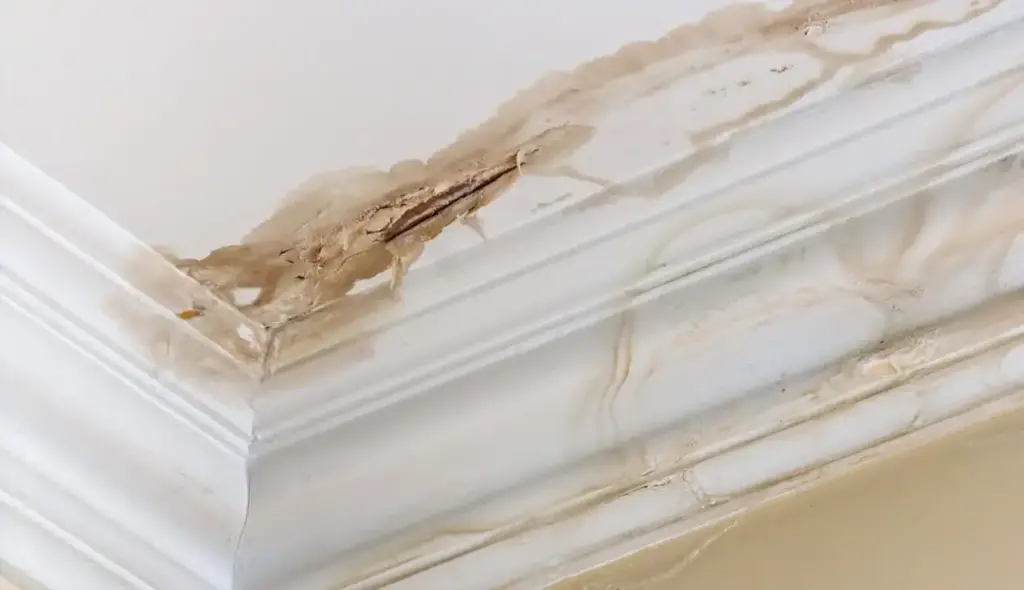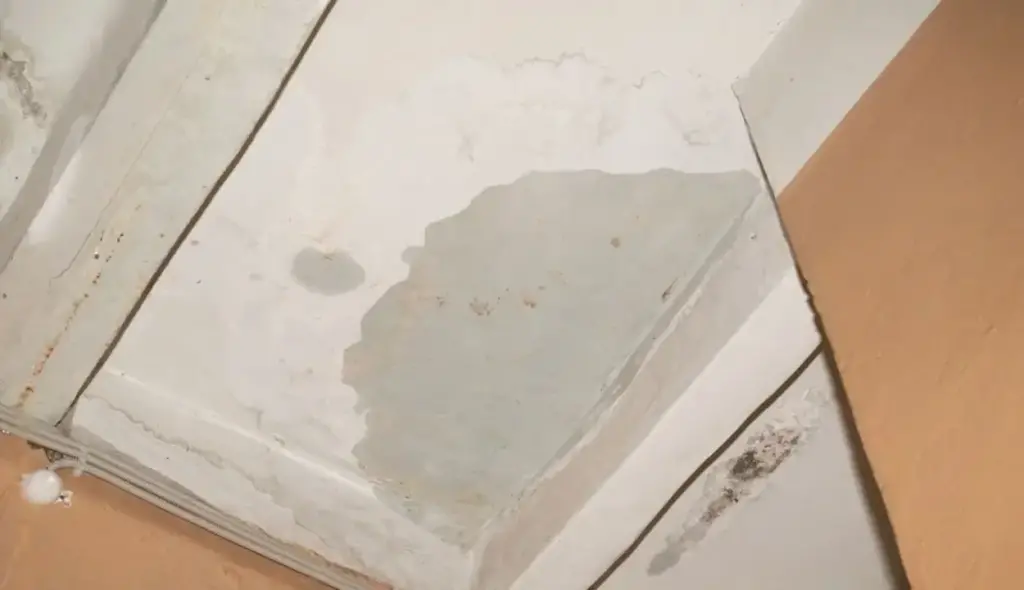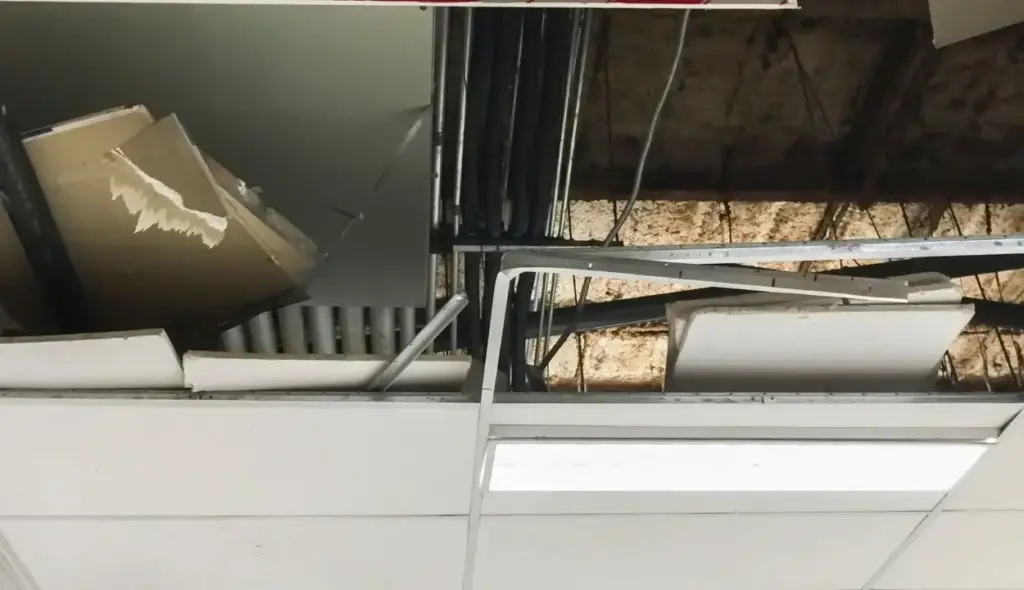Introduction
Leaks in a roof decking is never a good news for a homeowner. Left unchecked, small leaks in your roof decking can quickly escalate. These leaks can lead to major repairs involving rotted rafters and flooded insulation.
Additionally, they may require mold remediation and cause structural danger if ceilings collapse. That’s why it’s critical to act quickly when you spot any signs of a roof leak.
This comprehensive guide will teach you how to detect leaks in roof decking early and diagnose their cause. It will show you how to make instant repairs if needed, and determine when professional repair is required.
You’ll also understand the full process for permanent roof leak repair . Follow these tips, and you can catch problems before major damage arises.
Signs of Leak in roof decking

Visible Water Stains
The first signs of a leaks in roof decking are often visible water stains on ceilings and walls that reappear after it rains or snow melts. Pay close attention to any stains located uphill from roof edges and penetrations, as this indicates the potential leak area.
Darkened or peeling patches on interior paint and drywall also indicate moisture intrusion from above.
Growth of Mold or Mildew
Another clue is the growth of gray, black or green mold or mildew on roof decking, rafters, insulation, or walls and ceilings.
Mold thrives in the damp conditions created by roof leaks. A musty odor is also common with mold.
Ponding Water
Examine your roof after heavy rain or storm. Water should drain and evaporate within 48 hours. Any puddles or ponding water remaining indicate there may be low spots or clogged drains preventing proper drainage. This pooled water can leak through the roof over time.
Leaks Around Penetrations
Check areas around skylights, chimneys, plumbing vents, and other roof protrusions carefully. The flashing and caulk seals around them often degrade, crack, and fail as they age, allowing water intrusion.
Leaks concentrated around penetrations indicate the caulk or flashing needs repair.
What Causes Leaks in Roof Decking

Before attempting to fix a roof leak yourself, it helps to understand the common problems that cause them to occur in the first place. Worn or damaged shingles, tiles, flashing and membrane materials often create openings for water to seep through.
Impact damage from hail, falling debris, or even heavy load can damage shingles. Heat expansion and contraction opens up gaps between shingles over time as well.
Poor attic and roof ventilation allows warm interior air to accumulate and condense. This leads to moisture buildup that penetrates roof decking.
Minor settling and movement in the roof structure over the years also damage the roof deck waterproofing. And after 15-50 years, roofing components simply start to break down from weathering and age.
This depends on the material quality. Carefully inspecting your roof and looking for likely points of water entry will provide important clues. These clues will reveal what types of failures are allowing leaks to develop.
Finding Exact Location Leaks in roof decking

Discovering where water is penetrating the roof decking takes diligence:
Attic and Interior Inspection
Start by looking for moisture on rafters and insulation in the attic space close to any visible ceiling stains.
This indicates the general area where water is entering. Rusty nail heads poking through drywall also reveal leak locations in roof decking.
Close Roof Inspection
Examine the roof surface closely near penetrations like chimneys, skylights, and vents first. Ensure flashing is intact and caulk is not cracked or peeling away. Also inspect roof seams and edges where flashing may have failed.
Isolate with Hose Testing
Having an assistant spray water with a hose on suspect leak areas. This is useful if you are unsure of the exact leak location. Consider removing shingles in suspected areas to inspect the decking below directly.
Professional Inspection
Thermal imaging can also detect areas of hidden moisture intrusion. If you still cannot find the leak source, calling in an experienced professional roofer for inspection can help.
Applying Temporary Leak Repairs

For minor leaks or when funds are limited, you can buy some time before full roof replacement with temporary fixes:
Roofing Tape and plastic sheet
Applying heavy duty roofing tape or thick sealants into cracked shingles and gaps for fixing roof deck leaks. For best results, use sealants designed specifically for roofing.
For severe leaks, covering damaged areas with a sheet of polyethylene plastic sealed down the edges creates a temporary water shield. Weighing down the sheeting prevents wind uplift.
Rolled Roofing Overlay
Rolls of mineral-surfaced roofing membrane can also temporarily overlay and armor damage areas.
However, these temporary measures only buy time. For a long-term solution, full roof deck repair is needed.
Signs You Need a Professional Roofer
Roof repairs can be dangerous. In some circumstances, it’s smart to hire professional roofing contractors instead of DIY:
You’ve thoroughly inspected but the leak source remains unclear. Professionals have the khowledge how to diagnose it.
- fixing roof deck leaks requires roof access equipment like harnesses and lifts for safety.
- Temporary repairs have failed to solve the problem. It requires more comprehensive fixing.
- Sections of roof decking or rafters have rotted or collapsed and need replacement.
- There are signs of extensive damage like saturated insulation across large areas.
- The leak is isolated but located too high up to reach safely.
- You don’t have the proper tools, materials and skills to do repairs correctly.
You’ll gain peace of mind knowing roofers with years of experience will fix it right. They can also provide any needed maintenance or flashing upgrades while up there.
The Full Roof Leak Repair Process

Reputable roofing contractors will follow a clear protocol to permanently solve leaks in roof decking:
Thorough Inspection
They’ll examine the roof surface closely and check the attic and interior areas for evidence of moisture damage. Thermal imaging and water spraying help isolate the exact entry point.
Tear Off Damaged Roofing
After mapping all leaks, roofers remove shingles, underlayment, flashing and rotten decking in the problem areas. They properly dispose of damaged materials.
The process involves locating leaks, tearing out affected roofing components, and discarding the damaged pieces according to regulations. This provides a fresh base for new roofing.
Dry Out and Replace Decking
Before replacing roof decking, wet decking gets dried out. Any boards too damaged or rotten to function get cut out and replaced as needed.
Install Protective Underlayment
Leak barrier underlayment is rolled over all exposed decking to add a protective moisture layer beneath the new exterior roofing.
Replace Defective Flashing
Corroded, loose or improperly installed flashing around chimneys, valleys, vents and edges gets replaced and well-sealed according to roofing codes.
Apply New Exterior Roofing
In the repaired section, new architectural shingles or membrane roofing gets applied and secured per manufacturer specifications. Nails are sealed to prevent moisture penetration.
Integrate and Seal Properly
Any intersections between roof additions and the main roof get adequately sealed with high quality caulk and flexible flashing for waterproof integration.
Spray Test Repairs
Finally, roofers will thoroughly spray test the repaired area, looking for any leaks before completing the job. Permanent fixes require diligence.
Regular roof maintenance prevents expensive leak repairs. But when leaks do occur, this full professional repair process provides reliable long-term solutions.
Preventing Future Roof Leaks
The best way to avoid emergency roof leak repairs is keeping your roof well-maintained and addressed issues promptly:
| Maintenance Task | Frequency | Details |
|---|---|---|
| Conduct inspections | Twice a year | Walk the roof after major storms and inspect during dry seasons to identify issues early. |
| Clear debris | Frequently | Keep roof surface free of leaves and debris, trim overhanging branches to prevent clogs and moisture accumulation. |
| Ensure adequate attic ventilation | As needed | Collaborate with HVAC professionals to confirm sufficient vents and fans for proper air circulation and condensation prevention. |
| Replace roofing on schedule | Lifespan-dependent | Replace roofing materials when they reach the end of their lifespan (varies by material, typically 15-50 years). |
| Hire reputable roofers | As needed | Look for established local crews with training, certifications, and positive reviews. Avoid storm chaser contractors. |
| Use quality materials | Always | Choose higher quality materials such as laminated architectural shingles or standing seam metal for durability. |
With attentive preventative maintenance and care, you can keep your roof leak-free for decades. An ounce of prevention is worth a pound of cure when it comes to roof repairs.
Costs of Roof Leak Repairs

Realistic budgets for roof leak repair involve multiple considerations:
Certainly! Here’s a simplified table focusing solely on the cost-related information:
| Cost Factor | Cost Range |
|---|---|
| Water Damage Extent | Depends on extent of damage |
| DIY vs Professional Repairs | $400 – $1000 per day |
| Complete Roof Replacements | Exceeds $5000 (including permitting, materials, etc.) |
| Stopgap Fixes | Under $500 |
| Regional Labor Rates | Varies (Concrete tile may cost more than asphalt) |
Finding and quickly fixing small leaks keeps repair budgets down. Get multiple quotes from local roofers to compare options.
Key Tips for Repairing Roof Leaks
Conclusion
Left unchecked, small leaks in roof decking can turn into major problems. They can become structural emergencies and lead to expensive repairs. Diligently catching issues early and properly diagnosing the source of leaks is key.
Proper repairs and preventative roof maintenance can protect your home for many years. By acting promptly when leaks occur you can avoid massive headaches. Regular roof care keeps issues from spiraling out of control.
FAQ’s
How do you fix leaks in roof decking?
To fix a leaking roof deck, first locate the source of the leak by inspecting the roof and attic. Seal small holes and gaps temporarily with roofing tape or caulk. Hire a roofer if the leak source is unclear or repairs are complex.
How to repair roof decking?
To repair leaking roof decking, apply leak barrier underlayment over the surface. And install new roofing materials like architectural shingles in problem areas. Ensure proper drainage and ventilation to prevent condensation buildup. Regularly inspect and proactively replace deteriorated roof components.
How do you seal a leaking deck?
To seal a leaking deck, clean the area thoroughly, locate gaps and cracks in flashing, caulk or membrane. Fill these with roof sealant or caulking designed for weather exposure, and clamp down any raised nails. This process involves cleaning, locating leaks, sealing cracks, and securing loose nails to prevent further deck leaks.
Will Flex Seal helpful in fixing roof deck?
Flex Seal can temporarily seal small roof leaks from punctures, cracks, and holes. Apply several thick coats to create a fully waterproof barrier. However, it is not a permanent solution for roof leaks, as sealants deteriorate over time. For a lasting fix, repair or replace compromised roofing components and address the underlying issue.
Is it normal for roof to leak in heavy rain?
Minor leaks during very heavy rain, wind, and storms can be normal. Roofing components are aging or improperly sealed. Consistent roof leaks in severe weather means fix is needed. This requires attention and repair to prevent water. Don’t assume regular leaks are unavoidable. Inspect to determine fixable causes.

